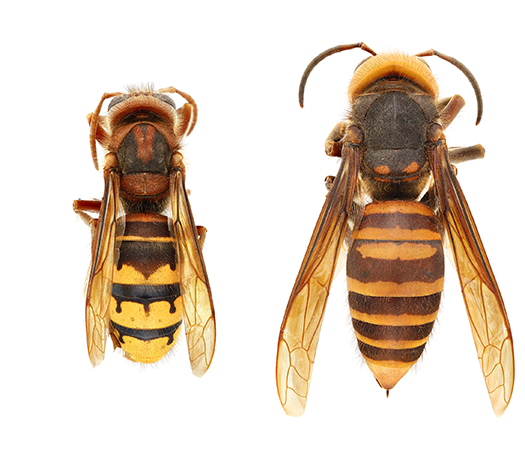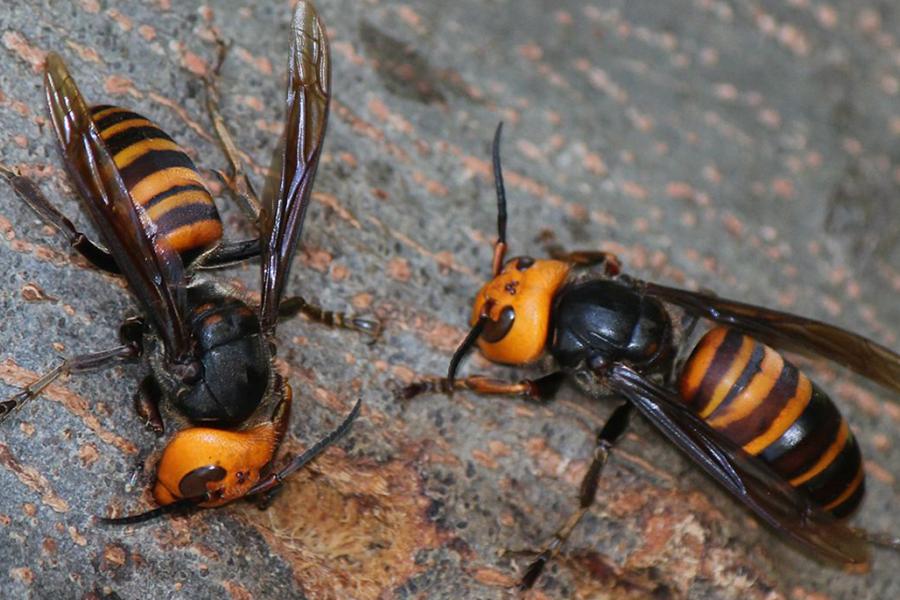VtInvasives has seen an influx of reports from concerned citizens. At this time, there is no evidence that Asian Giant Hornet populations are established anywhere in the United States.
Most reports have been of European hornets (Vespa crabro). See comparison photo at right.
European Hornets

(left) European hornet (Vespa crabro) | (right) Asian giant hornet (Vespa mandarinia); Credit: Hanna Royals, USDA APHIS
- European hornets are present in VT.
- It is an invasive species that we consider to be established in the state. No action is being taken to eliminate it.
- Ranges in size from 1 to 1.5 inches long, usually around half the size of an Asian Giant Hornet.
- Has marking that can vary, but appears to have “teardrops” of brown to black on the primarily yellow abdomen,
- Has a dark band on the front of the abdomen right after the “wasp waist,” unlike the yellow band in the Asian Giant Hornet.
- Learn more about European hornets here.
Removal
If you have European hornets near your house, it is recommended to call a pest control operator. They are large and do sting and are best left to professionals to remove.
Asian Giant Hornet
The Asian giant hornet (AGH) is a paper wasp. Its native range extends from northern India to East Asia. In August 2019, the AGH was first reported in North America in the Nanaimo area of Vancouver Island, Canada. Three specimens were found, and Canadian and international experts confirmed the species. The next month, an AGH nest was located in the same area and eradicated.
In December 2019, USDA’s Animal and Plant Health Inspection Service (APHIS) confirmed the detection of a single AGH in Blaine, WA. Washington State University identified a second AGH later that same month. At this time, there is no evidence that AGH populations are established anywhere in the United States. APHIS’ Plant Protection and Quarantine (PPQ) program has provided over $400,000 in funding in fiscal year 2020 to support exotic hornet research and an AGH survey in Washington.
For common look-alikes and more information, visit the USDA APHIS Asian Giant Hornet page.
Photo Credit
Alpsdake, CC BY-SA 3.0
